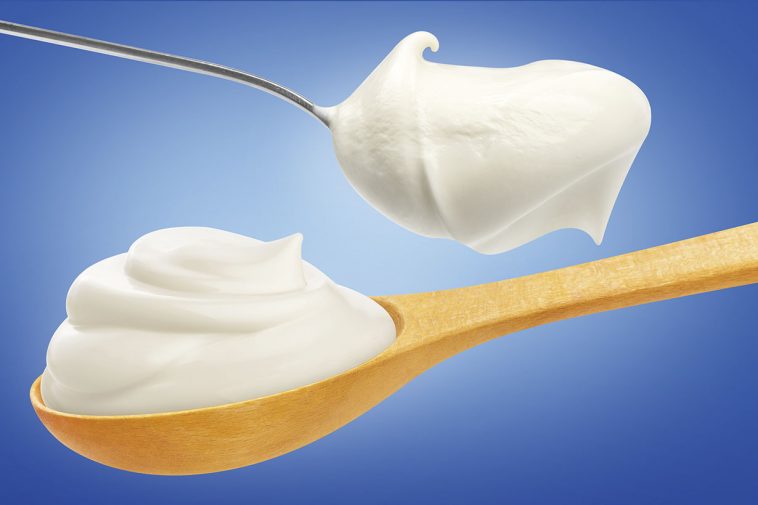Sour cream is a pretty divisive food product. Some cultures downright discard it as a gross and long overdue product, looking at it in the same way some people would look at the Chinese 100-year old eggs or another exotic food novelty.
The truth is that sour cream has many health benefits that often go unnoticed by ordinary citizens and public health authorities. Since it is often used in desserts and fattening dishes, many people are often left wondering: “is sour cream healthy“?
The short answer is yes. The most important misconception that needs to be eradicated in modern society is that all fatty foods and dairy products are bad for your health. Fat is actually needed for your organism to function correctly.
As long as you don’t go overboard with it by consuming enormous quantities of heavy products on fat and carbs (such as pizza), it is an important component of a balanced diet. Of course, it doesn’t mean that you should drink a glass of oil every day to remain healthy. The fat should come from the right source, such as avocado or sour cream.
But how exactly does sour cream impact your body’s overall condition? Keep reading to find out more.
An Abundance of Healthy Components
Although sour cream may contain compounds and protein that are beneficial to your health, this doesn’t apply to all kinds of cream you would generally find on supermarket shelves. Fat-free products, or those with reduced fat content, are useful if you’re trying to lose weight. However, they are missing significant amounts of what makes this substance healthy in the first place.
In order to get all of the benefits out of it, you should always buy high fat or full-fat sour cream. As mentioned earlier, there are different kinds of fat, and not all of them are necessarily bad for you. Milk fat is one of the key components of this substance. Fermenting cream with certain types of lactic acid bacteria makes the cream sour, and a lot of the beneficial elements are contained within the fat.
With that out of the way, you’re probably wondering: what exactly are those beneficial elements? Aside from a healthy way to fulfill your daily required fat intake, the cream is also rich in essential minerals, such as calcium and phosphorus. Vitamin D is also present in the product, although the low-fat varieties don’t provide enough of it for you to notice.
The lactic acid used in the production process has been proven to be helpful in terms of regulating your gut biome. These bacteria can help control intestinal infections, improve your digestion of lactose, as well as control cholesterol levels!
Finally, just like milk, sour cream works wonders for bone health, especially in younger individuals. Consume considerable amounts of the stuff to enjoy this benefit, though (about three servings per day). Unless you’re leading a very active lifestyle, you might want to skip that part, as it can lead to putting on some weight relatively quickly.
Healthy Ideas for Dishes with Sour Cream
The main problem with utilizing the benefits of dairy is the fact that they are often part of quite unhealthy dishes, such as pizza or chili cheese nachos. Just because sour cream is a key component of some fattening foods with high calorie and fat contents, it doesn’t mean that it can’t be used in a better, more healthy way.
Grilled sour cream and onion chicken is quite possibly the tastiest option to utilize cream in a healthy way. Not only is it a great lunch idea that should suit the tastes of adults and children alike, but it also doesn’t require too many ingredients or time spent in the kitchen! These meaty bites could also be put out on the snack table at a party or family gathering. The cream makes for a perfect dip, and your guests will surely end up licking the plates clean!
Another way to improve your cooking with a little bit of sour cream is by adding it to the soup. It’s a long-standing Eastern European tradition, coming from a part of the world where sour cream (or smetana, the local variety) is revered as a key ingredient in every household. Thanks to this non-invasive addition, your soups will not only taste better, but they’ll also be more filling.
Final Thoughts
Food, just like any other substance, is neutral at its core. It may be bad or good for you, depending on how you use it in your day-to-day life. For example, potatoes are cheap and nutritious staple foods that can enrich your meal and reduce the flavor intensity of some dishes. You can also deep fry them in a jug of old, reused oil and make a bag of chips or a few servings of french fries.
The same logic applies to sour cream — it can be a good alternative to the heavier dairy products, as well as an irresistible guilty pleasure responsible for the extra couple of pounds you’ve put on over the winter.



